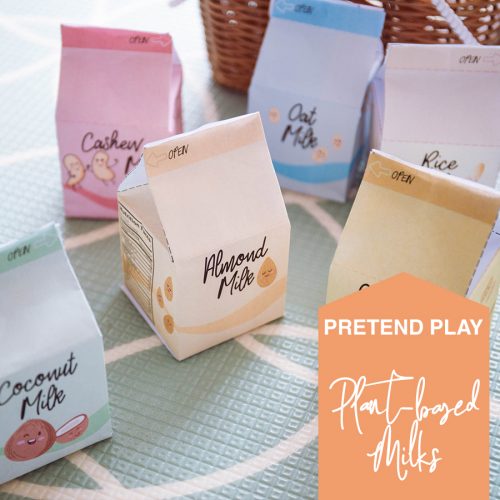Why you’ll love this
- Help toddlers and pre-schoolers to master scissor cutting in a fun way
- Spark creative fine motor skills and coordination practice
- Cutting allows a child to build up the tiny muscles in the palm of his/her hand, since he/she has to continuously open and close the hand. These muscles are also used when the child is writing/painting or holding onto anything with a grip. For example, a child needs to hold onto a toothbrush, spoon or fork, and pull up their pants on a daily basis.
- Cutting enhances the use of eye-hand coordination. This means that the child must be able to use his/her vision, process what they see, and then be able to move their hand while they are looking at something. This can be a difficult task because it requires the brain to be working with two systems. However, eye-hand coordination is used throughout your child’s day. It is used when your child catches or throws a ball, uses a spoon to scoop up the food that they want, and zips up his/her coat.
- Cutting encourages your child to use bilateral coordination. This means that your child can use both sides of their body at the same time. For example, when cutting a circle, a child must hold the paper with one hand (and continuously turn it) while the other hand is opening and closing the scissors and moving forward to cut. You may need to try this to understand the true meaning. Bilateral coordination (using both hands, while each one is doing something different) is used throughout everyday life. For example, it can be used when you are zipping up a coat or pants, washing dishes, opening up an envelope, and driving.
- Opportunity to practice cutting curved (for the more advanced) and straight lines (basic cutting)
- Use this in role play by creating a pizza shop dramatic play space so children can pretend to cut and serve pizza in their very own pizzeria
What’s included
4x Ready to print A4 sheets with one pizza on each sheet. Each pizza measures approximately 18.7cm in diameter. The pizza flavours are:
- Margherita Pizza with tomatoes, basil leaves, mozzarella cheese and tomato sauce
- Gamberi Pizza with garlic prawns, rocket, mozzarella cheese and tomato sauce
- Hawaiian Pizza with pineapple slices, ham/bacon, mozzarella cheese and tomato sauce
- Supreme Pizza with pepperoni, mushrooms, olives, rocket, mozzarella cheese and tomato sauce
This pizza cutting printable set is available in two styles.

The free version is a black & white drawing outline style and you can buy the full COLOUR version for only $0.99 (inc GST). 
What you’ll need
- Home printer and 4x A4 sheet of paper
- Scissors with rounded edges so they are not as sharp. Please note that scissors can be dangerous and children should be supervised at all times when using scissors. Most of all do not be scared or nervous to let your child use scissors if you are with them.
How to play
- The printable PDF file includes four ready-to-print pages. You may refer to our recommended printer settings in the FAQs.
- Depending on the child’s scissor skills level, you may want to trim the pizzas down to the round edge so they can practice cutting straight lines (cutting pizza slices). Once your child has mastered cutting straight lines, you can encourage them to cut curved edges by going around the edge of the pizza. This will require more careful control of the scissors.
- Make sure your child has the proper hand grasp placement.
- Practice, practice, practice! Build the child’s confidence by giving them lots of cutting practice! Set-up a pizza shop dramatic play space with lots of pizzas to cut and serve! You can bring this to life by including plates, cutlery, table settings, etc.
Scissor Cutting Tips
You may want to hold the paper for your child when they first start to cut, since bilateral coordination can be a difficult thing to learn. A child should first just learn how to open and close his/her hand and feel the sensation of cutting a piece of paper. If your child is having difficulty with opening and closing his/her hand or getting frustrated, you may want to try using other instruments or doing other tasks that are associated to cutting. For example, tongs and tweezers require the same open-close motion of scissors.
As a guide, this is the developmental sequence of when children should be cutting:
- 2 years: snip the ends of a piece of paper
- 2.5 years: cut through a piece of paper
- 3.0-3.5 years: cut on a 1/2″ darkened line (can not cut off of the line more than 3 times)
- 3.5-4.0 years: cut out a circle with darkened lines (has to stay close to the line for 3/4 of the circle)
- 4.5-5.0 years: cut out a square with darkened lines (corners should be sharp)
Source: Kimberly M. Wiggins, OTR/L, is a licensed occupational therapist in New York.
NOTE: This is a digital download and no physical product will be delivered
DID YOU MAKE THIS?
Share your creations by tagging @mamahasgotthis on Instagram with the hashtag #mamahasgotthis











Reviews
There are no reviews yet.